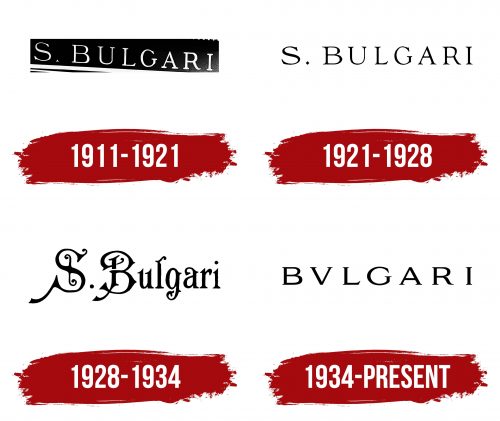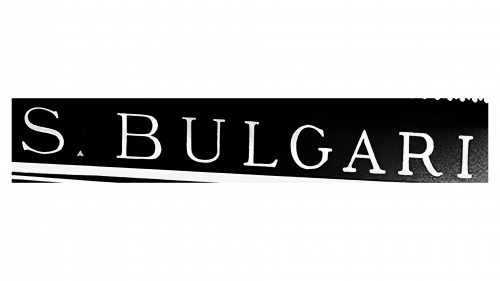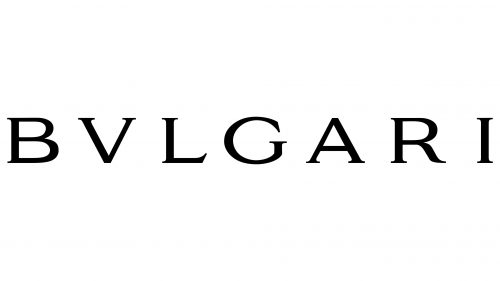The Bvlgari logo emphasizes the connection with history, reflecting the passage of time and encompassing services that have been in demand for several generations. The emblem elements closely link the brand to the grandeur and luxury of Ancient Rome, symbolizing the products’ impeccable quality and refined style. The visual mark hints at the craftsmanship of working with precious stones and intricate patterns in settings, highlighting the brand’s historical heritage and pursuit of perfection.
Bvlgari: Brand overview
The first Bvlgari establishment opened in Rome in 1884 when Sotirios Voulgaris, a skilled Greek jeweler, founded the brand. Born in the small Greek village of Paramythia in 1857, Sotirios came from a family of silversmiths. As a young man, he began learning the craft by working in his father’s workshop.
After moving to Rome in 1881, Sotirios opened his first shop on Via Sistina three years later. This marked the beginning of the Bvlgari brand, a Latin version of the founder’s last name, Voulgaris.
The store’s early years were not easy. Most silver goods Sotirios sold were designed in a classical Greek style. However, his skill and hard work paid off, and the shop soon began attracting attention from the Roman aristocracy. In 1905, Sotirios opened a second store on Via Condotti, an area known for its elegance and luxury in Rome. This store, which still operates today, became the flagship location and has witnessed many important moments in the company’s history.
By the 1910s, the company had earned a reputation for creating exquisite silver goods. Around this time, the business began experimenting with jewelry and gradually expanded its offerings.
During the 1920s and 1930s, the brand experienced significant growth. Sotirios’ sons, Giorgio and Constantino, began taking an active role in managing the company. They brought fresh ideas and a new perspective to jewelry design. During this period, the company started to develop its unique style, moving away from traditional French designs of platinum and diamonds. In 1932, a new store opened in Naples, and in 1934, the flagship location on Via Condotti, was renovated and expanded, marking the brand’s growth beyond Rome.
Despite the hardships of the war years, the company used the 1940s as a period of creative innovation. One hallmark of its style that emerged during this time was the bold use of color in its gemstone combinations.
By the 1950s and 1960s, the brand had established itself as one of the leading jewelry houses in the world. The iconic style, characterized by cabochon gemstones, geometric shapes, and vibrant colors, emerged during this era. Hollywood stars like Sophia Loren, Audrey Hepburn, and Elizabeth Taylor became fans, further boosting the brand’s international reputation.
The 1970s marked the beginning of the company’s international expansion. Boutiques were opened in New York, Paris, Geneva, and Monte Carlo. At the same time, the company introduced its first timepiece and began exploring watchmaking.
The brand expanded its offerings in the 1980s. In 1984, the founder’s grandsons, Paolo and Nicola Bulgari, became chairman and vice chairman of the company. Under their leadership, the company launched its first fragrance, “Eau Parfumée au Thé Vert,” in 1992.
Throughout the 1990s, the company continued to grow globally. In 1995, it went public. An accessories line was introduced in 1996, and a watch collection followed in 2000. Entering the 2000s, the company expanded its product range and global presence. In 2001, it partnered with Marriott International to create the Bvlgari Hotels & Resorts line. The first hotel opened in Milan in 2004.
A major event in the brand’s history occurred in 2011 when the company became part of the French luxury group LVMH (Louis Vuitton Moët Hennessy). This acquisition allowed further expansion while maintaining the brand’s unique identity and creative independence.
Following LVMH’s acquisition, the company continued its rapid growth. It increased its presence in the high jewelry market by introducing new lines of distinctive designs each year. The company also made waves in the watch industry with innovative models like the Octo Finissimo, which set a record for the thinnest watch movement.
In 2014, the brand celebrated its 130th anniversary by reopening its flagship store on Via Condotti and launching special jewelry and watch collections.
In the following years, the company continued expanding its presence globally, introducing innovative designs and opening new stores. It also focused on growing its accessories line, particularly leather goods and handbags.
By 2023, the company had established itself as one of the world’s leading luxury brands, staying true to its Italian heritage and distinct identity. The story of this iconic brand is one of creativity, innovation, and a relentless commitment to excellence in jewelry. It is also the tale of a family business that has grown into a global name.
Meaning and History
What is Bvlgari?
This Italian luxury brand has gained international recognition as a symbol of elegance and extravagance. Founded in Rome as a jewelry shop, the company expanded its range, offering luxury goods, including watches, accessories, and fragrances. The brand stands out in the luxury market due to its bold use of vibrant gemstones and ancient Roman and Greek art elements, creating its distinctive style. The brand gained particular fame with the Serpenti collection, based on the imagery of snakes, which became a symbol of bold design and creativity. The brand has also made strides in watchmaking, setting several records for creating the world’s thinnest watches.
1911 – 1921
The brand’s first emblem is a delicate signature in fine font. This mark resembles a nameplate on a door, connecting the brand with its founder and creative visionary — the Greek Sotirio Bulgari, which explains the presence of the letter “S” at the beginning of the inscription. The logo appeared after the store’s opening and most likely adorned its sign.
The thin lines of the visual mark emphasize the elegance of the jewelry, aligning with an aristocratic style that lacks bulkiness and excessive luxury. The slight tilt of the inscription adds an elegant ease to the logo, subtly suggesting the lightness and free arrangement of the jewelry adorning ears, wrists, and necks.
1921 – 1928
The 1921 emblem differs little from the original version. The font and style of the inscription retained their previous forms, but the visual mark was stripped of its dark background and tilt. One of the interesting elements is the dot after the letter “S,” shaped like a diamond — a subtle nod to precious stones. This element reflects the influence of geometric motifs characteristic of the products of that time, which, in turn, underscores the brand’s adherence to Parisian fashion.
1928 – 1934
The logo from this period can be considered the most unusual and extravagant due to the use of an antique font. The intricate endings of the glyphs and sharp spikes on the bars and curves create the impression of twisting plants, connecting the inscription to roses. The font refers back to the brand’s origins. The name Bulgari is derived from royalty, adding a sense of importance. In the early days of its existence, Sotirio Bulgari created silver jewelry adorned with floral motifs inspired by Byzantine and Islamic styles.
1934 – today
The modern inscription, introduced after the founder’s death, was modified, giving the Bvlgari logo a unique character. The main innovation was the stylized writing, where the letter “u” was replaced with “v.” This deliberate choice references Ancient Rome, as the brand has Italian roots. Using the Latin alphabet emphasizes the company’s long-standing history, founded in 1884, and its historical connection to classical heritage. In Ancient Rome, there was no clear distinction between the letters “U” and “V,” and this form of writing was characteristic of Roman inscriptions on stone, adding an air of ancient grandeur to the brand and highlighting its prestige and luxury associated with the image of the Roman Empire.
This stylization became a landmark step in the company’s development, foreshadowing its future success when the brand joined the large conglomerate LVMH in 2011. This change gave the logo a classic look and became a symbol of the transformations that took place within the company. In addition to replacing the letter “u,” the letter “S” was also removed from the name, which was tied to the fact that the business passed to the founder’s sons. This decision emphasized the continuity of generations and the continuation of the family tradition in the brand’s development.
Changes were also made to the font, which became simpler and more concise, reflecting a new stage in the evolution of the company’s style. While continuing its traditions, the brand adapted to modern demands, retaining elegance while introducing more restraint and minimalism into the design. This updated style harmonizes well with changes in jewelry collections, demonstrating a shift toward contemporary sophistication that blends with the brand’s rich history and prestige.








